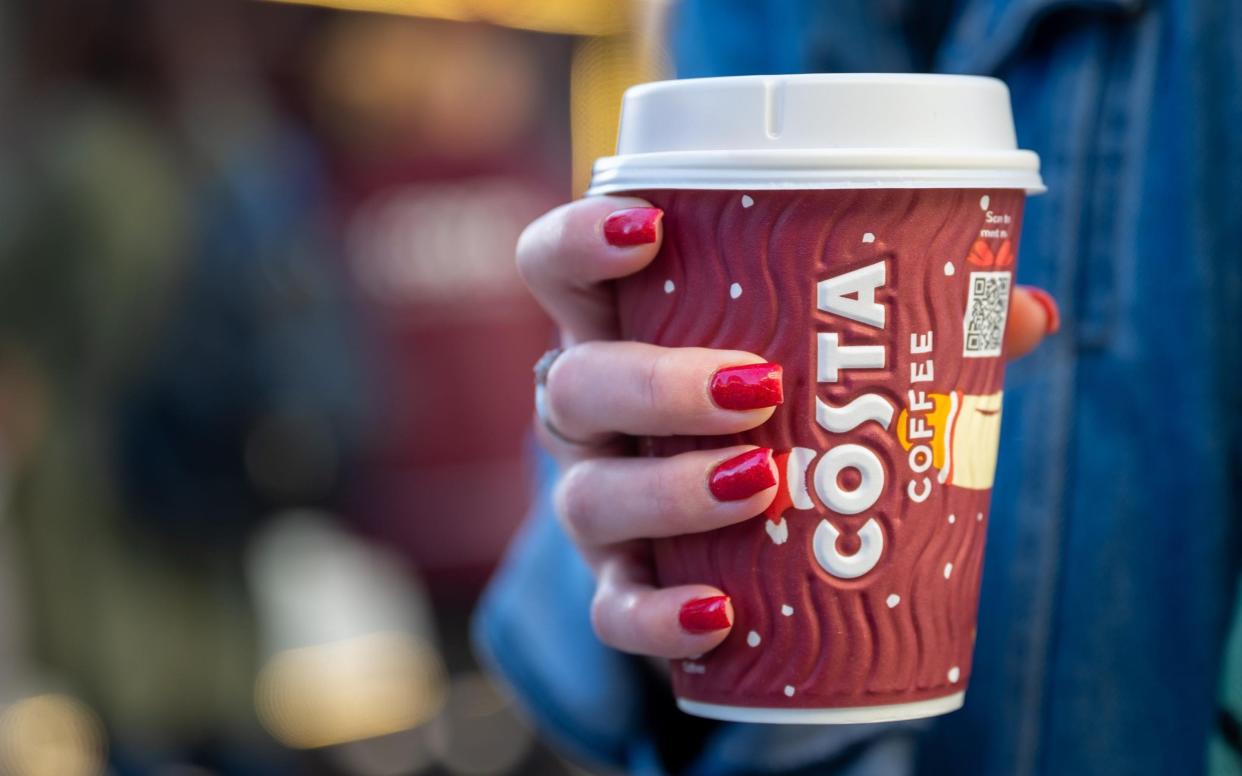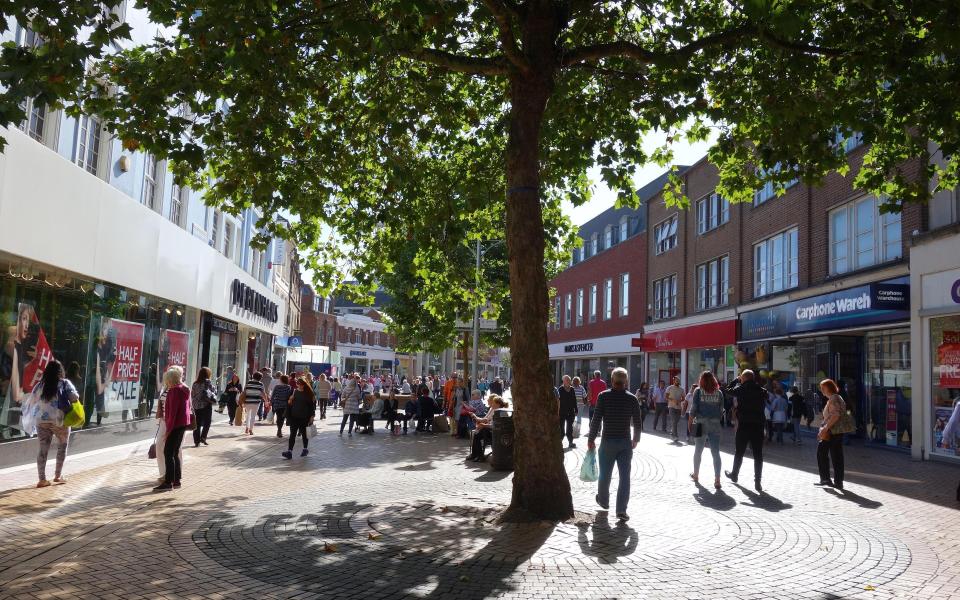A coffee shop on every corner – how Costa took over the UK

Take a visit to Chelmsford in Essex, and you’d be forgiven for thinking you’d stumbled upon a town which is absolutely obsessed with coffee.
Last week the town was revealed as the Costa capital of the UK, home to 25 of the company’s outlets. This works out at roughly one Costa for every 4,000 residents. Pret a Manger, Starbucks, Café Nero, and a wide range of independent coffee houses also have a presence in the town, so how has Costa Coffee achieved dominance?
It’s worth noting that the figure is perhaps not as surprising as it might seem at first, including self-service machines in shops and petrol stations, rather than just bricks-and-mortar locations (of which there are actually 10).
But Costa is certainly popular. In fact, the British company, founded in London in 1971 is the second largest coffeehouse chain in the world, operating in 41 countries (behind only Starbucks which, in the UK, it outnumbers nearly three to one.)

The last decade has been a good one for coffee. According to Allegra figures published in early 2020, there were around 26,000 coffee shops in the UK, double the number that there were 10 years earlier. With 1,600 wholly owned stores in the UK, in addition to 1,100 franchisees, Costa is by some margin the biggest chain in the country, followed by Starbucks, which has just over 1,000 locations and Café Nero with 628. (There are also newer interlopers to the scene which aren’t best known for coffee, but have started selling it such as McDonalds which operates 1,300 UK locations and Greggs with 2,078 outlets.)
“It’s a double edged sword,” says Philip Inzani, owner of Polo 24 Hour Bar, an independent coffeehouse in central London - coffee capital as well as actual capital and where trends and habits tend to first take shape. “Competition is always competition, but it's positive because lots of people are drinking coffee. Back in the 1970s and 1980s, no one outside of Italy knew what a cappuccino was… but now it’s gone global. The big chains have done a lot to educate the public on what coffee is.”
Inzani says that despite being a traditional British café, his coffee sales outpace tea by four to one: in his view, coffee has become not just a beverage but a lifestyle. In turn, that has helped create an ecosystem where people’s palates for quality coffee have grown, allowing independent coffee shops to thrive. “Without the chains, we certainly couldn’t have independents,” he adds, perhaps surprisingly.

“The amount of new roasteries has increased substantially, so you could argue that there is now more space for them and you might also read from this that cafés are looking to get their beans as local as possible and through other independent companies,” suggests Noni Morrison, owner of Noni’s Coffee Roaster in Gloucestershire. “I am definitely finding local businesses are keen to work with local suppliers and I believe that higher quality coffee is definitely on the up in terms of popularity. Once your palate is accustomed to better quality coffee it is very hard to look back!”
That’s not to say the big chain's products are necessarily of the highest standard. “I personally don’t enjoy chain coffee, I know I’m biased but I’ll go out of my way to go independent if I can,” says Inzani. “I think the best of the big chains is Café Nero, that’s the most authentic. I don’t like Starbucks; I can't go there. Obviously they sell a lot of coffee but I don’t think that’s based on quality, just that people like to know what they’re getting.”
And they’re getting a lot. “If you go in to get a cappuccino, you get offered a lot of options and huge sizes,” he adds. “One of the chains I was in recently was offering a size which ended up being nearly a litre of milk. That’s not what a cappuccino is. It’s almost doing a full circle so the independents and the coffee roasters are going back to the roots of quality, smaller sizes but cheaper coffees; you enjoy a small cup and if you want more you get another. I’d say anything over £3 is an expensive beverage, but people pay it.”

The chains then, are generally not overpriced by Inzani’s standards: at Costa a medium latte is £2.45, £2.60 at Starbucks, and £2.35 at Caffé Nero though obviously larger sizes do approach the £3 mark. One of the reasons people might be happy to pay such prices is that the coffeehouse has evolved, offering a space to chat, to meet, and even to work on free WiFi. Costa in particular was praised by one customer who spoke to the Telegraph, as a solid alternative to working from home. “I can plug in my laptop, use their power and WiFi and work for as long as I want for the price of a drink,” Jen Davies, owner of CV Shed said. “Plenty of other people are using it as an office, so I don't feel bad about it. Costa works well if you're juggling running a business with parenting, like me.”
In Chelmsford those 10 standalone stores are, in addition, providing employment, which is welcome
In the past, Costa has also flexed its credentials as a large brand doing good for the community. In 2014 it set up a Community Programme to help tackle litter, loneliness, and food waste in local communities by providing its stores as hubs for people to address such concerns as well as encouraging employees to volunteer. The effort was praised by the Sustainable Food Association in 2019. The company also became the first coffee brand in the world to use only Rainforest Alliance certified beans in 2008.
Efforts to diversify via express machines in transit hubs and petrol stations came in 2011 when Costa bought Coffee Nation, and have also proved popular with customers. “I love Costa, its express machines have massively increased the standard of generic coffee machines,” one customer, Jack Jolly, told the Telegraph. “Most shops have generally replaced the generics with them: the milk is fresh and they use decent beans. Whereas previously you’d have lots of small brands unable to offer decent turnover of product, not much milk, and limited coffee styles.”
While Chelmsford might have reached peak Costa by now, that’s not to say the future doesn’t look bright for coffee more generally…

 Yahoo News
Yahoo News 
